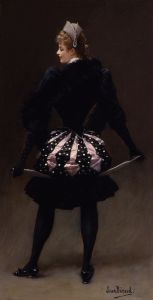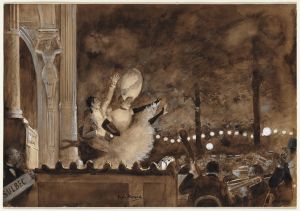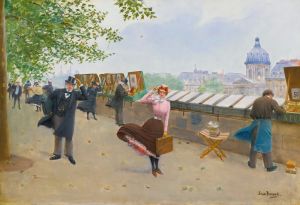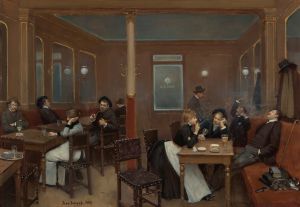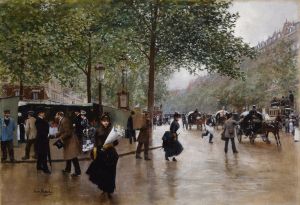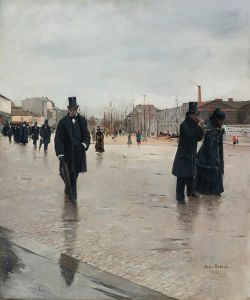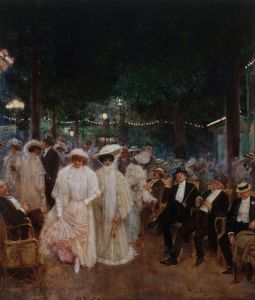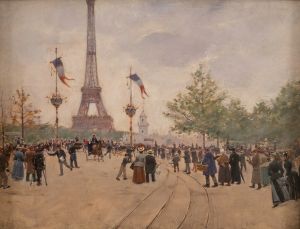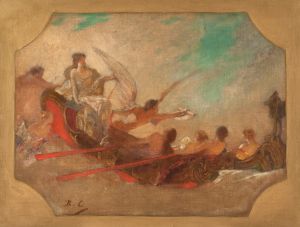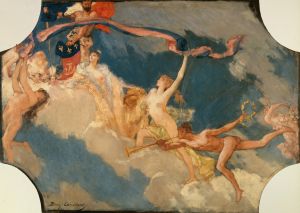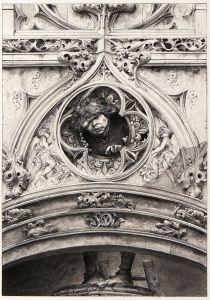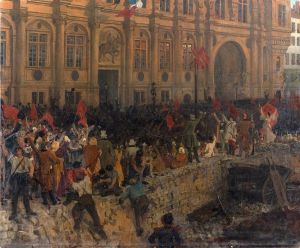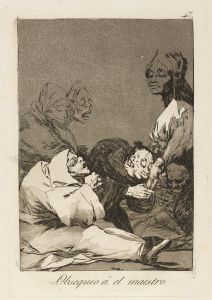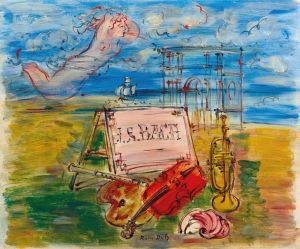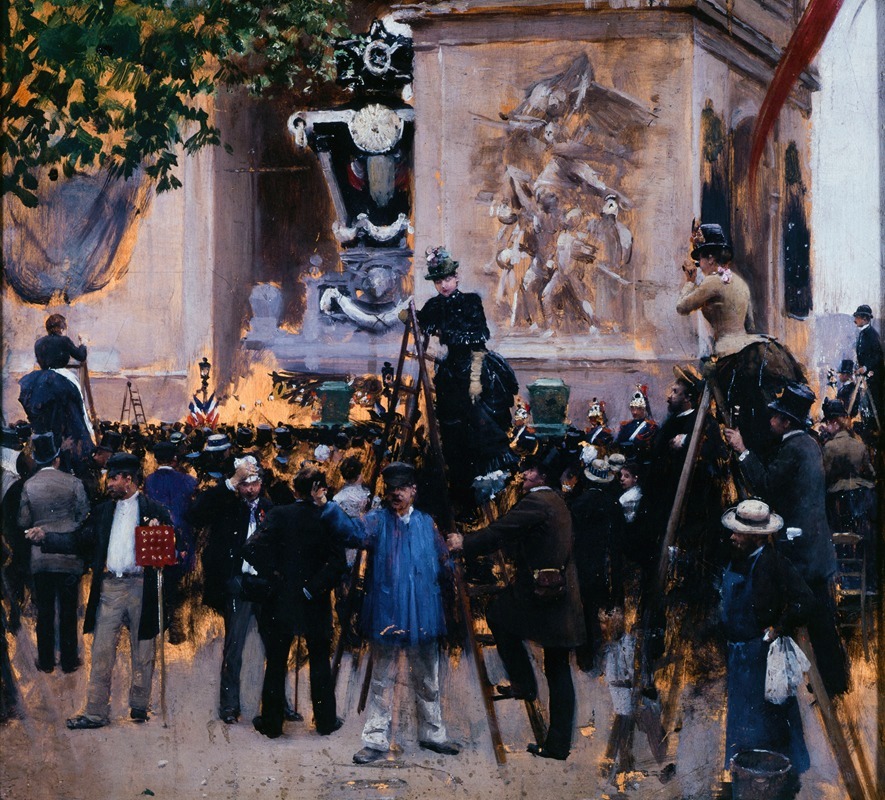
Les funérailles de Victor Hugo, place de l’Étoile
A hand-painted replica of Jean Béraud’s masterpiece Les funérailles de Victor Hugo, place de l’Étoile, meticulously crafted by professional artists to capture the true essence of the original. Each piece is created with museum-quality canvas and rare mineral pigments, carefully painted by experienced artists with delicate brushstrokes and rich, layered colors to perfectly recreate the texture of the original artwork. Unlike machine-printed reproductions, this hand-painted version brings the painting to life, infused with the artist’s emotions and skill in every stroke. Whether for personal collection or home decoration, it instantly elevates the artistic atmosphere of any space.
Jean Béraud's painting Les funérailles de Victor Hugo, place de l’Étoile depicts the funeral procession of the renowned French writer Victor Hugo, which took place on June 1, 1885, in Paris. This event was a significant moment in French history, as Hugo was one of the most celebrated literary figures of the 19th century, known for his works such as Les Misérables and The Hunchback of Notre-Dame. His death was marked by a national outpouring of grief, and his funeral became a major public event.
The painting captures the solemnity and grandeur of the occasion, set against the backdrop of the Place de l’Étoile, now known as Place Charles de Gaulle, where the Arc de Triomphe stands. The scene is filled with a large crowd of mourners, reflecting the immense respect and admiration Hugo commanded during his lifetime. The composition emphasizes the scale of the gathering, with figures from various social classes coming together to pay their respects. This inclusivity mirrors Hugo's own advocacy for social justice and his role as a symbol of the French Republic.
Jean Béraud, known for his detailed and realistic depictions of Parisian life, brings his characteristic precision to this work. The painting not only serves as a historical record of the event but also as a testament to the cultural and political significance of Hugo's legacy. The use of light and shadow, as well as the careful rendering of the architecture and the crowd, creates a vivid and poignant atmosphere.
Victor Hugo's funeral procession began at the Arc de Triomphe, where his body lay in state, and proceeded to the Panthéon, where he was interred. The decision to bury him in the Panthéon, a mausoleum reserved for France's most distinguished citizens, underscored his status as a national icon. The event drew an estimated two million people, making it one of the largest public gatherings in French history.
Béraud's painting is an important visual document of this historic moment, capturing both the scale of the event and the deep emotional resonance it held for the French people. It stands as a tribute not only to Victor Hugo but also to the enduring impact of his work and ideals.





